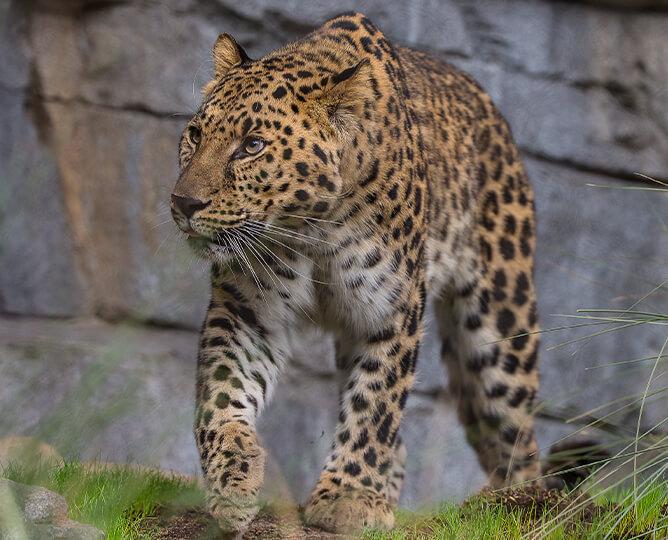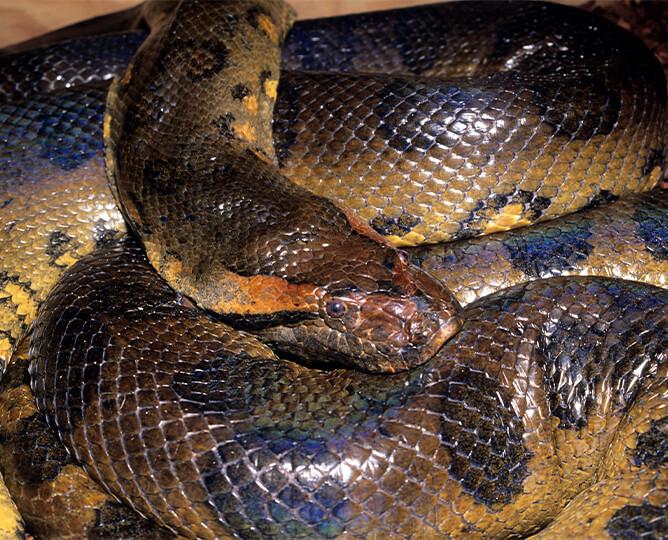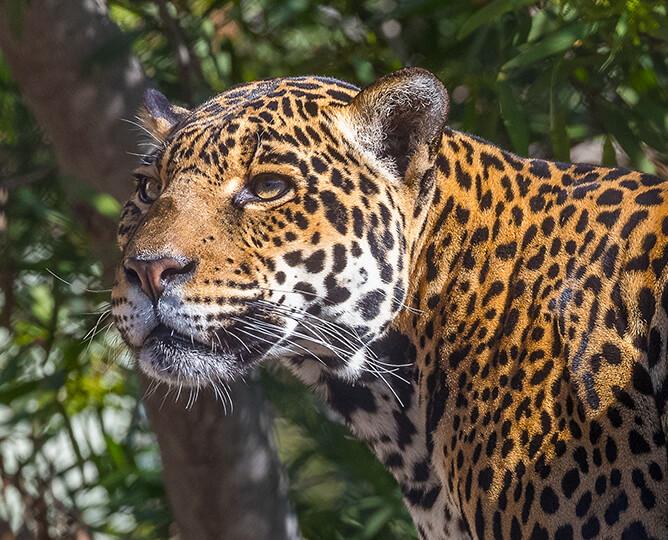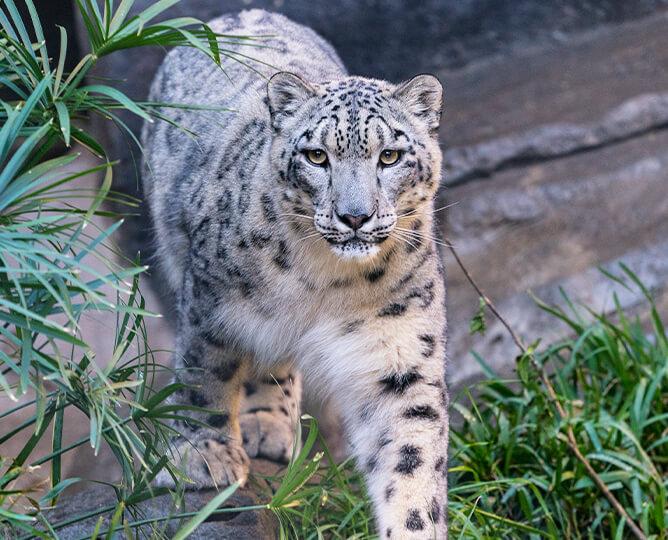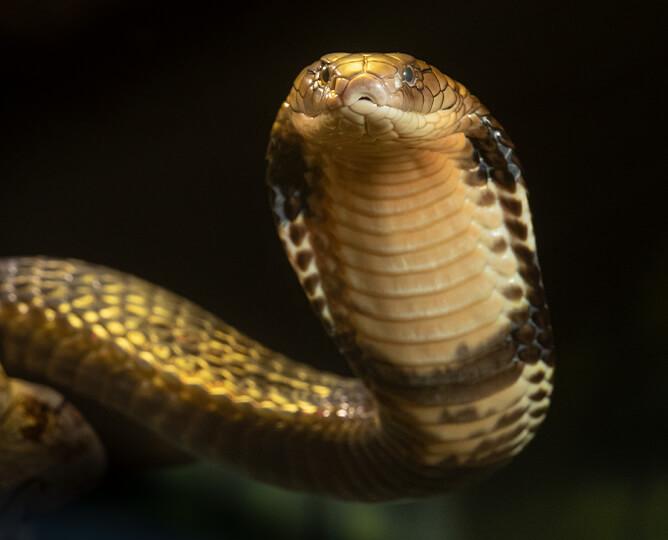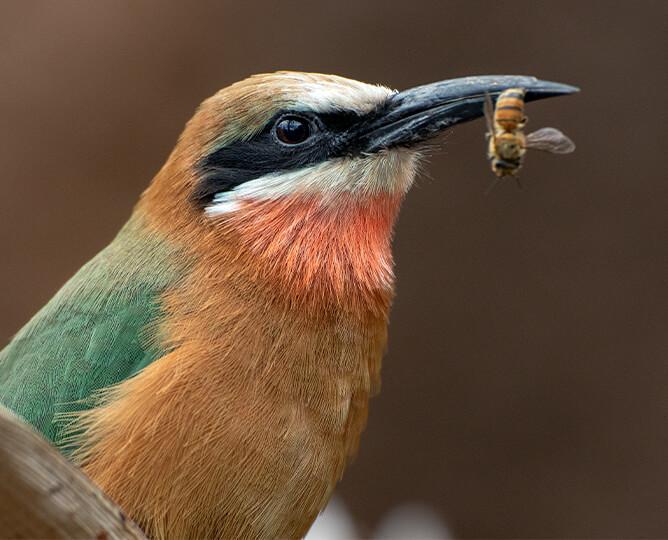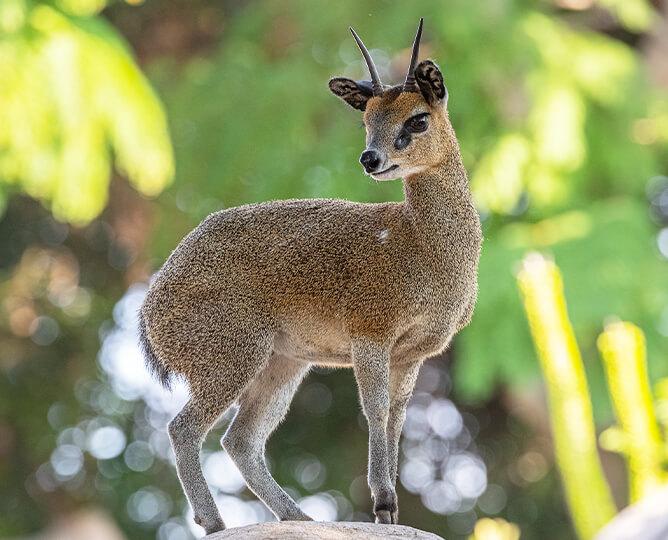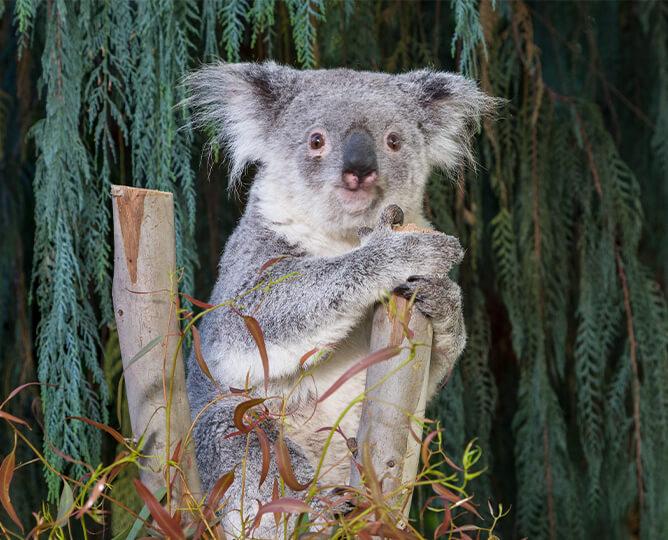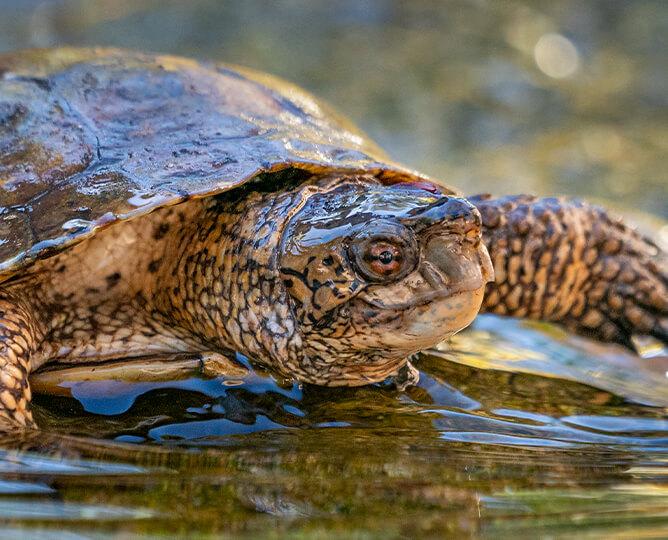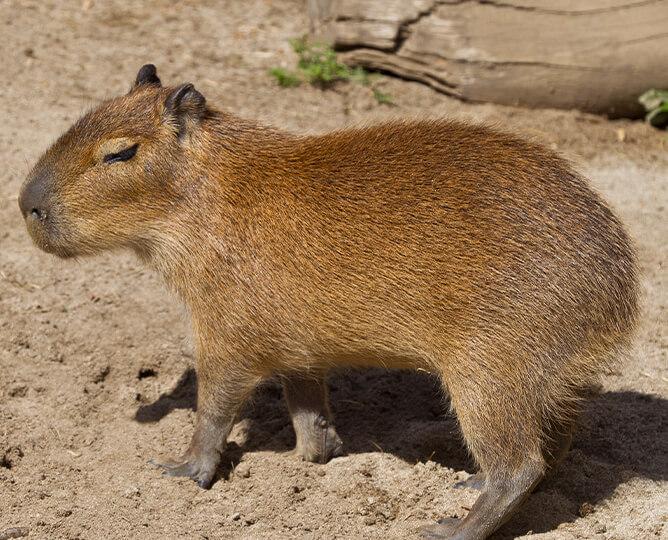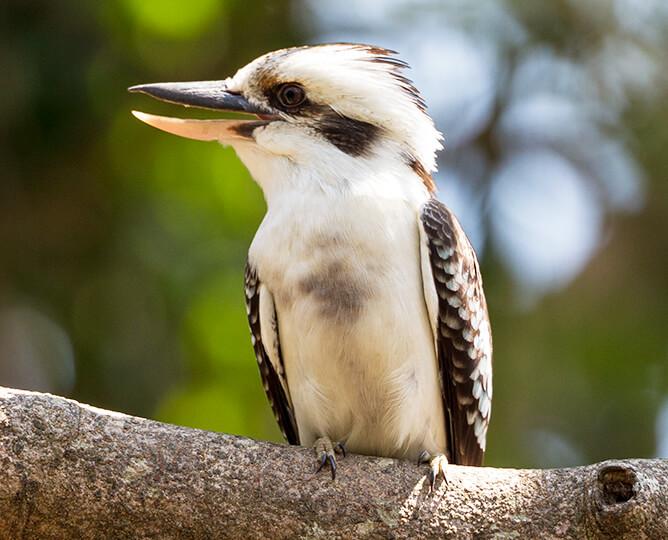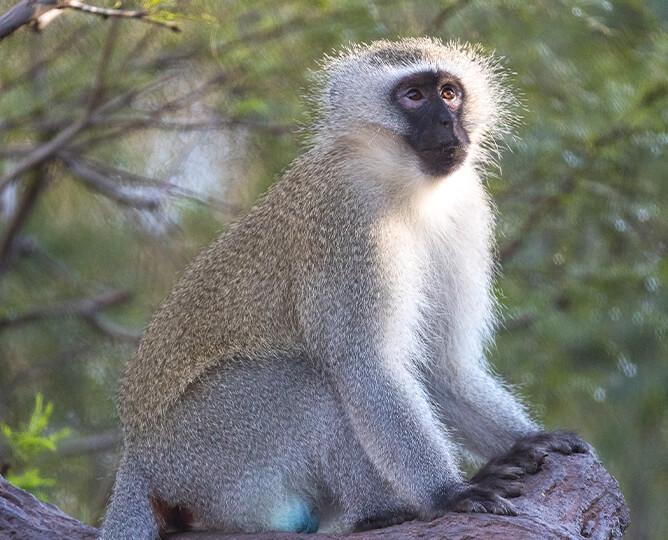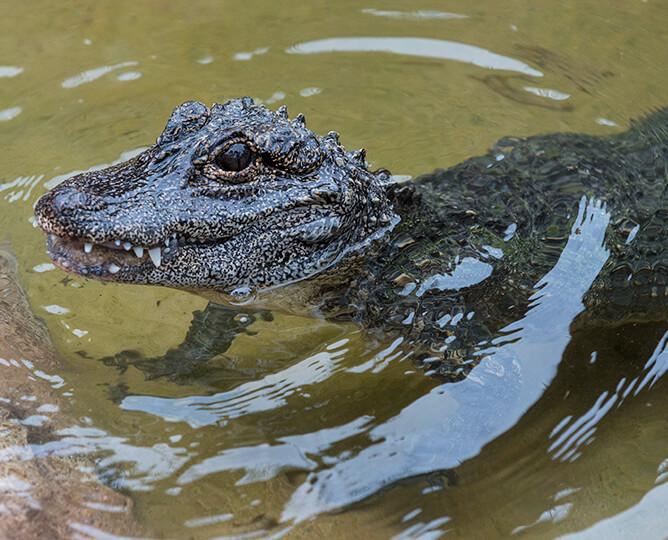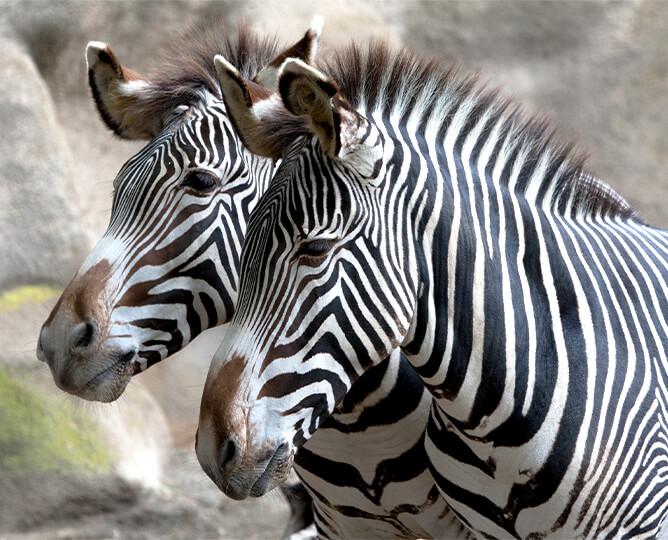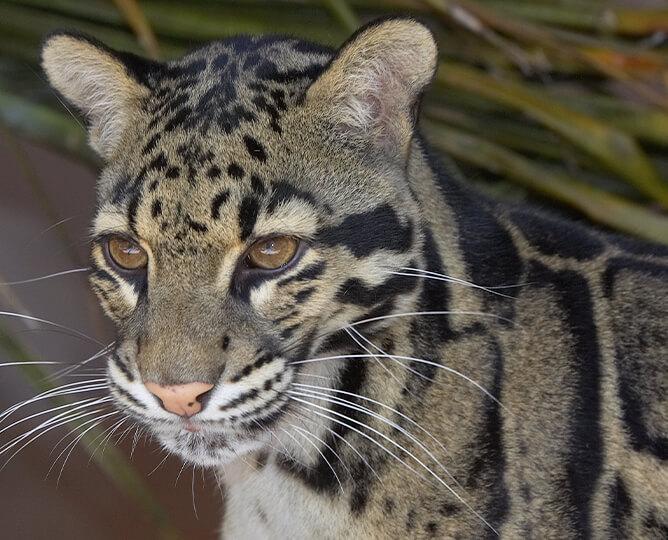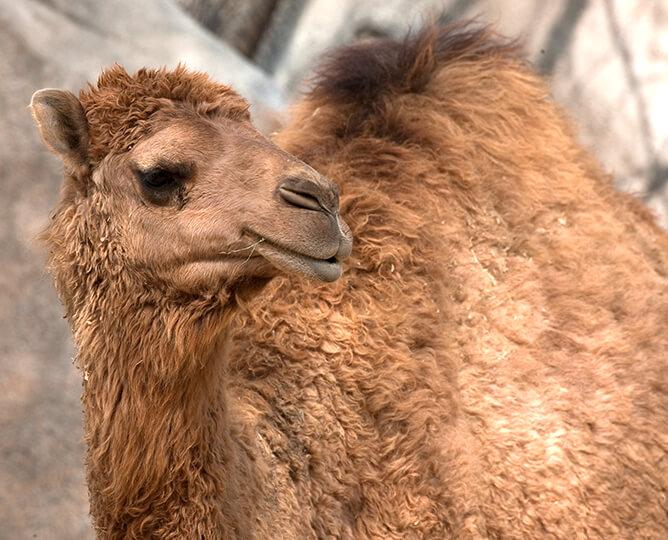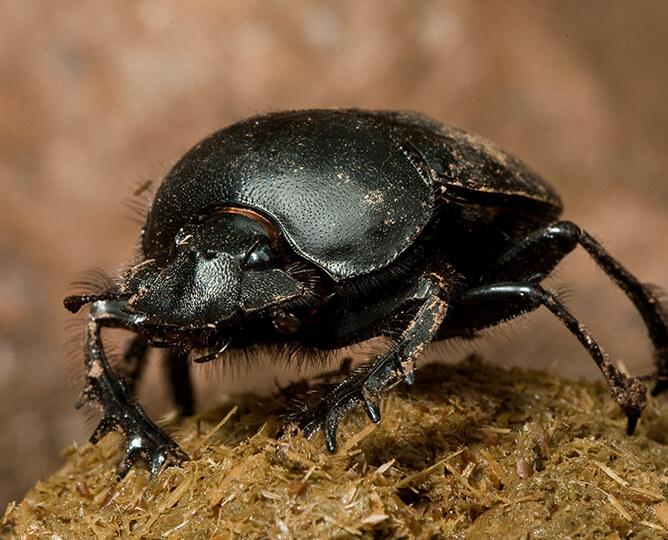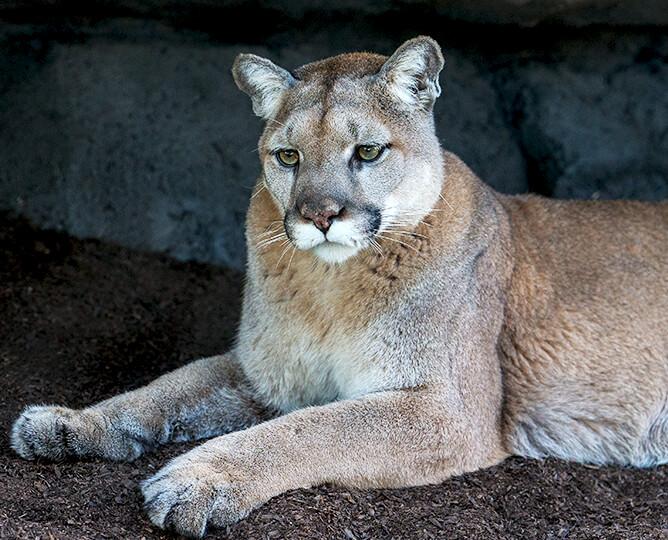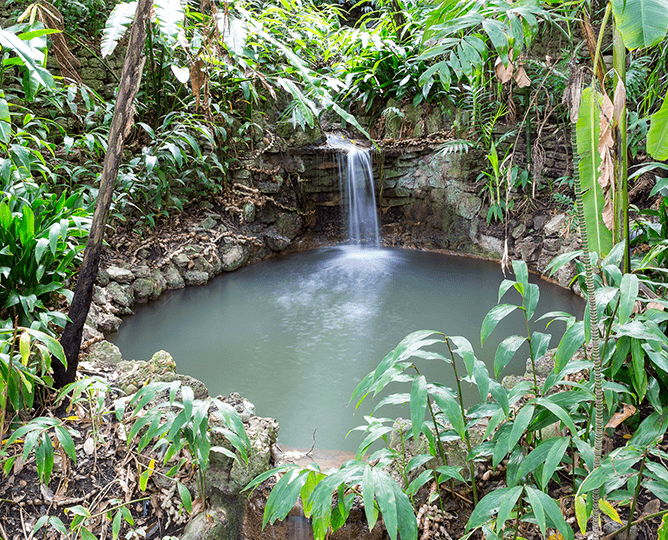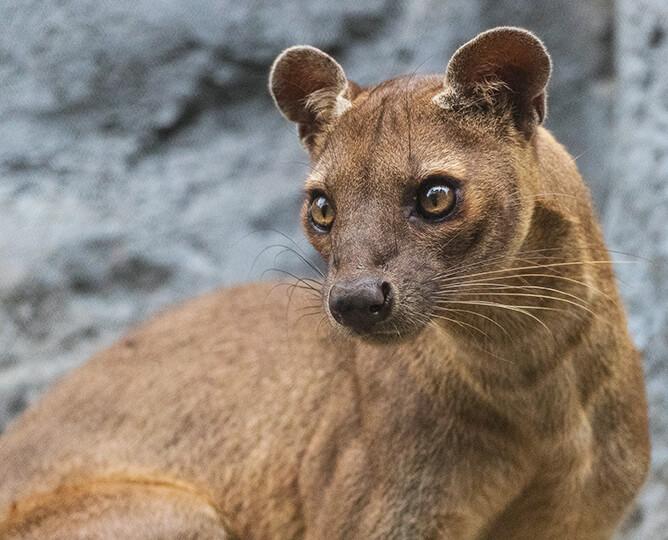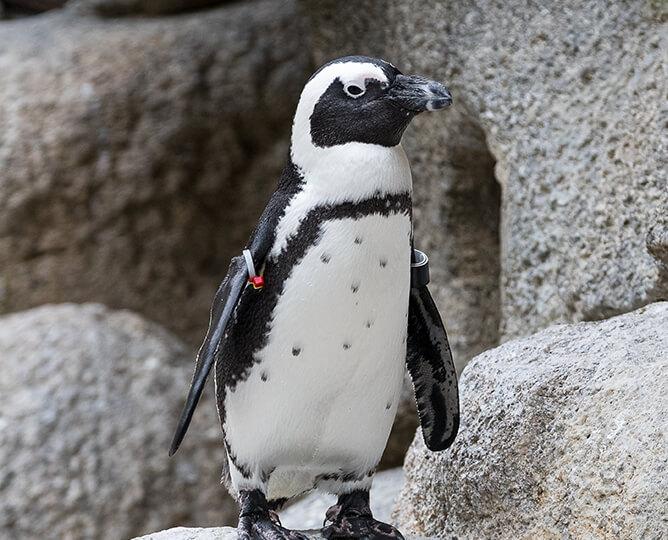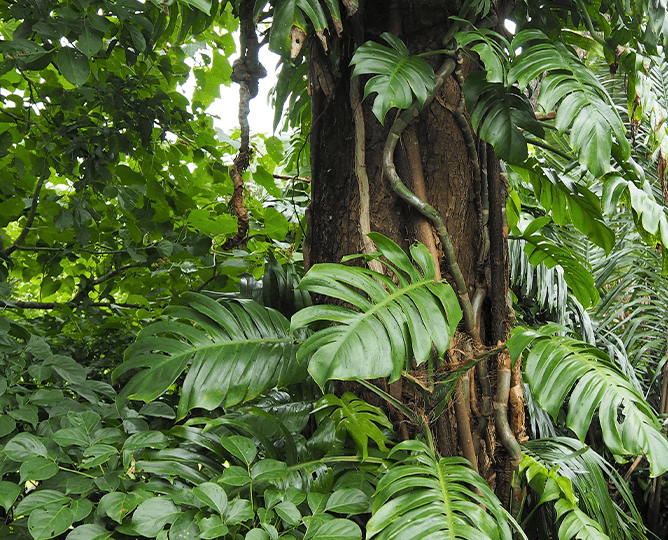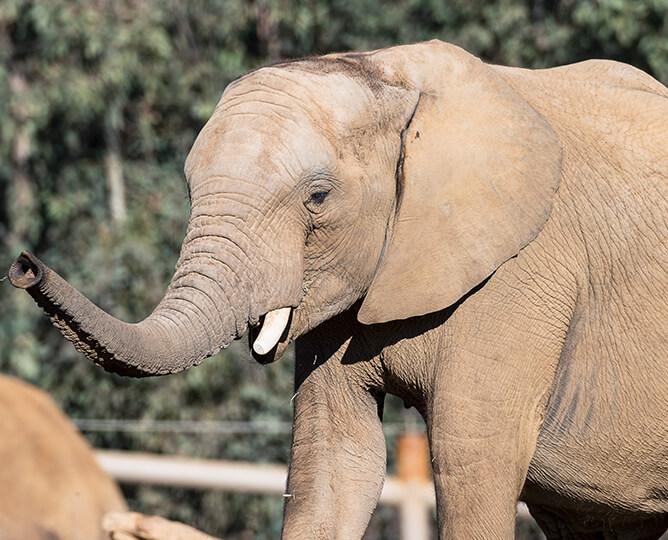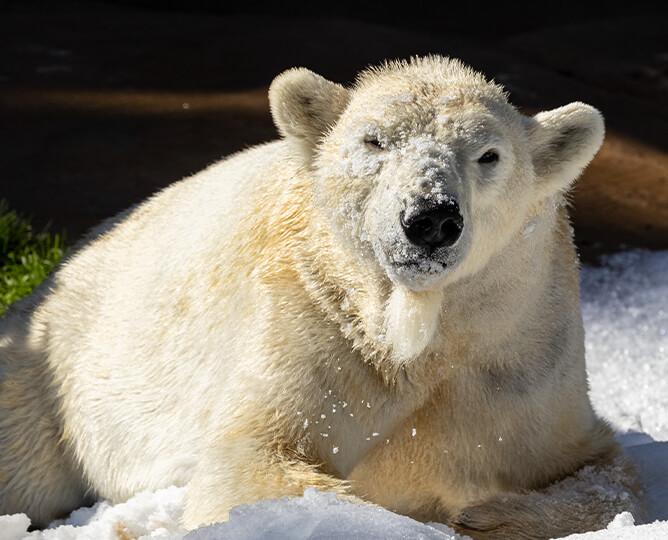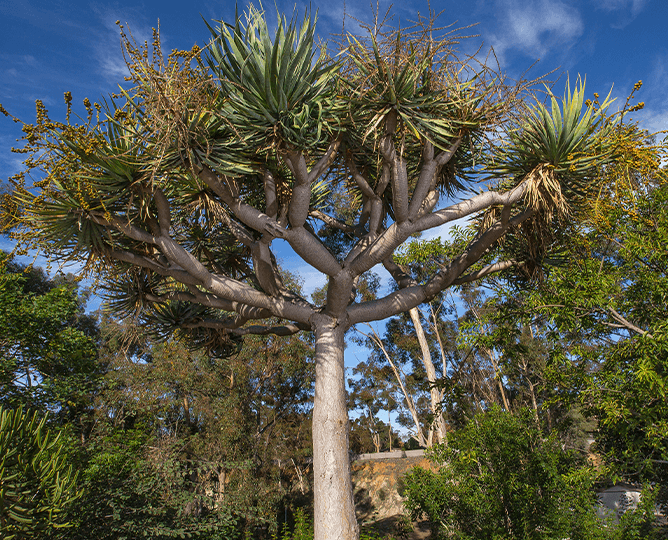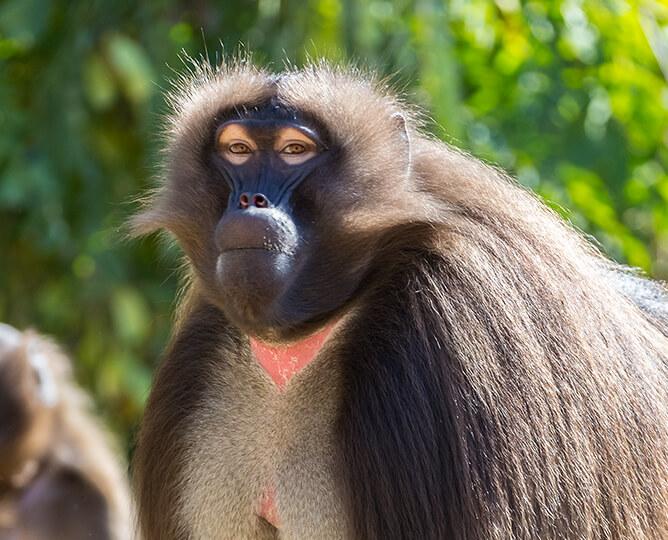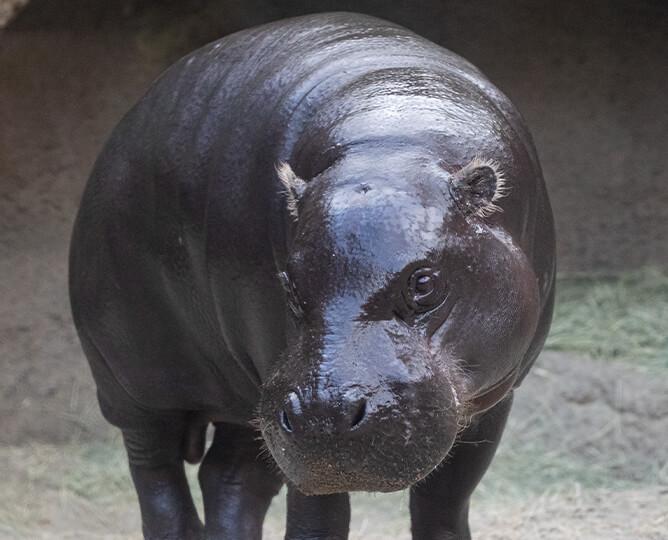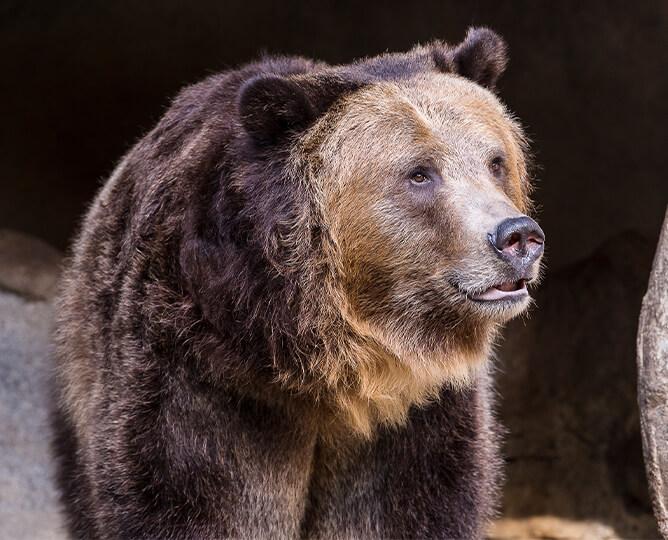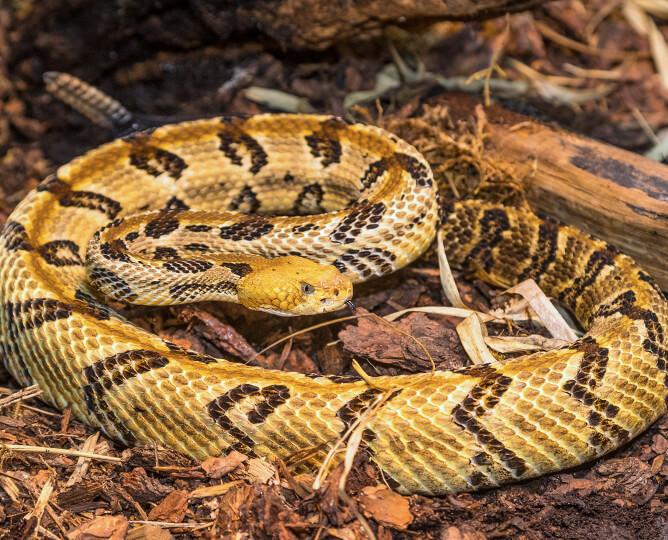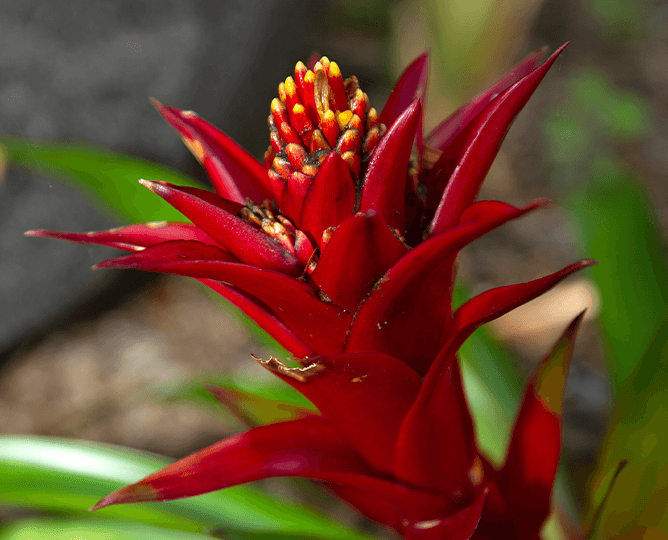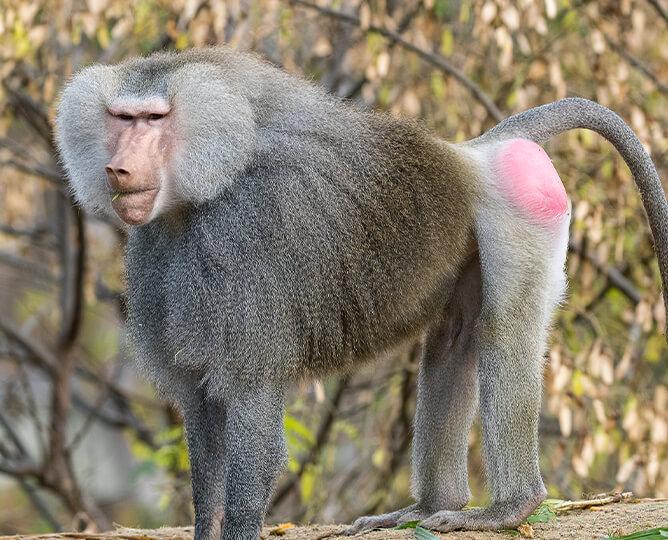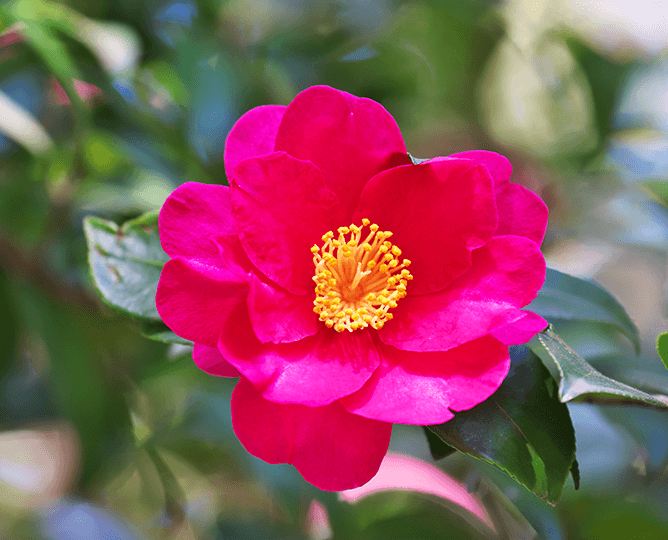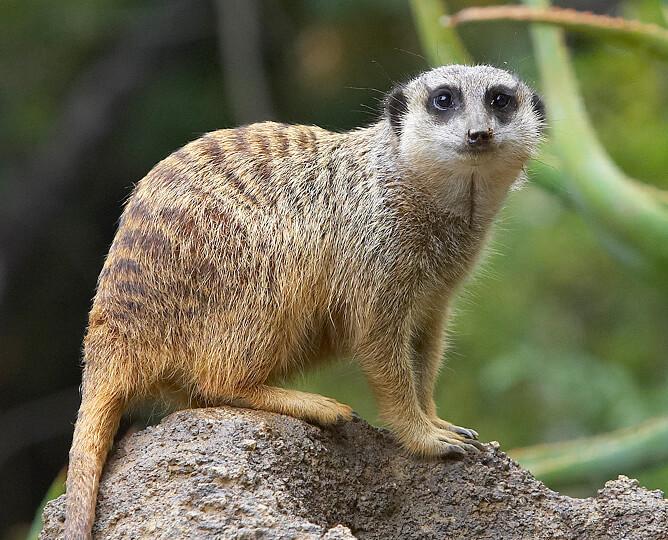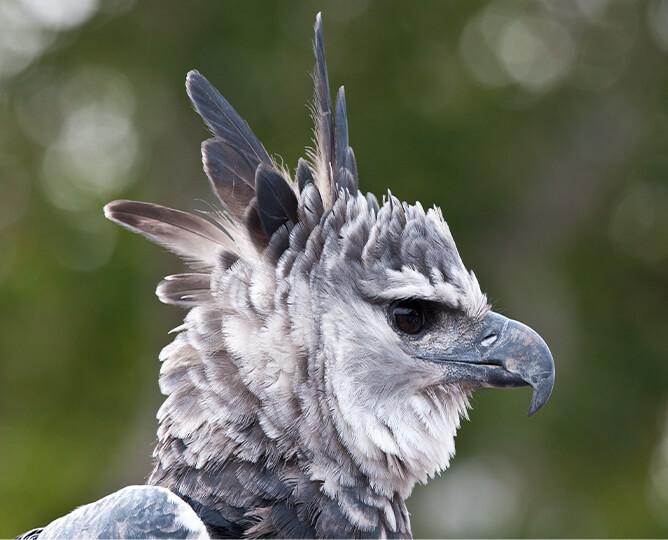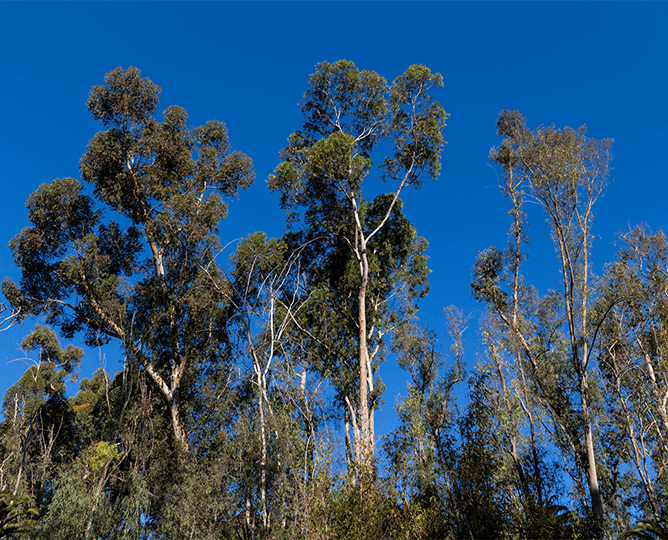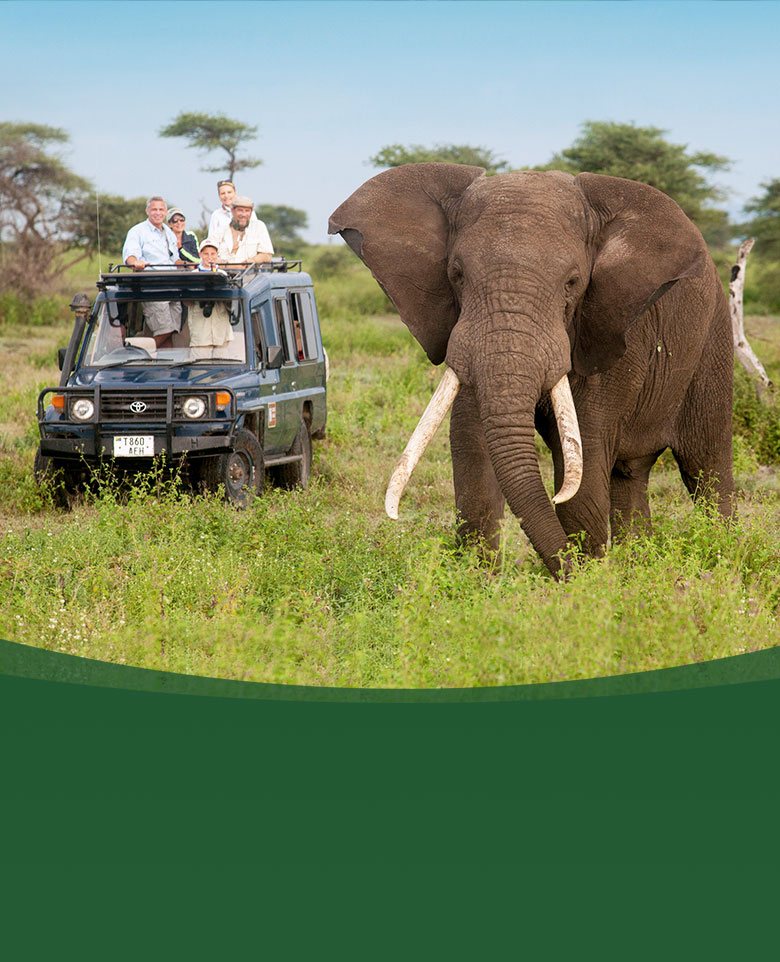Explore the wildlife you will encounter on a visit to the San Diego Zoo.
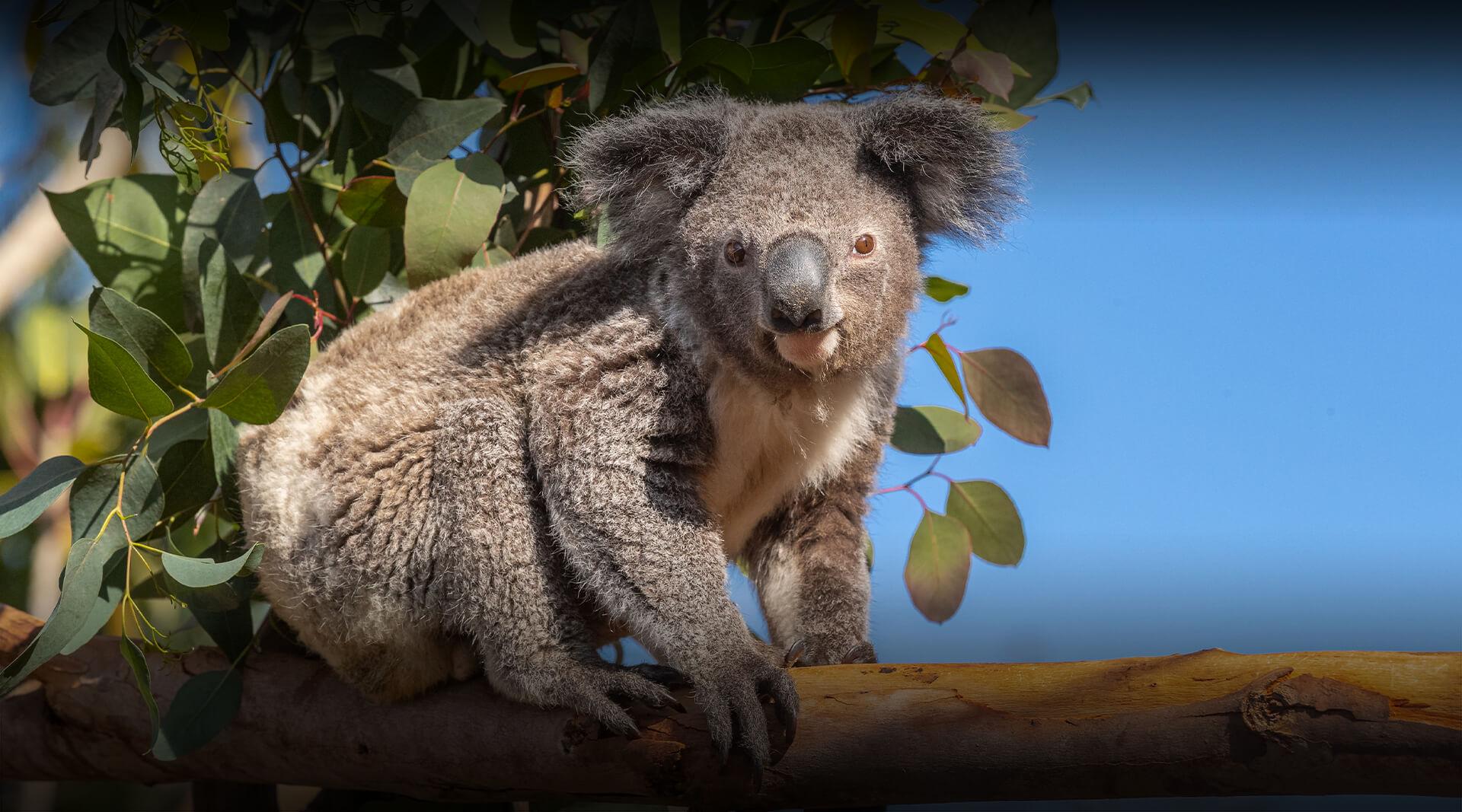
Wildlife
Amur Leopard
Amur leopards love climbing, exploring, and playing with new things, and have a keen appreciation for scents.
Hippo
With their eyes, ears, and nostrils on the top of the head, hippos can hear, see, and breathe while most of their body is underwater.
Serval
Long limbs give servals the ability to leap nine feet—straight up—to catch birds in midair, or reach deep into a rodent burrow to pull out prey.
Tiger Trail
A simulation of a tropical Asian rainforest, Tiger Trail features plants watered with a custom, high-tech misting system that has allowed them to grow to the point where you may truly feel like you're walking into a jungle.
Anaconda
A member of the boa family, South America’s green anaconda is the heaviest snake in the world.
Jaguar
Jaguars are built for life in the tropical rainforest, with muscular limbs and large paws to climb trees, pad along the forest floor, and even swim in rivers and streams.
Snow Leopard
Snow leopards live in Asia at very high elevations, where there are steep cliffs. The wild goats and sheep they prey on are quite nimble at leaping from rock to rock—and so are snow leopards!
Terrace Lagoon
There's almost always something blooming among the Terrace Lagoon's beautiful collection of bamboo, Asian pines, and flowering trees and shrubs.
Babirusa
Sometimes called the "pig deer" because of adult males' unusual tusks, babirusas live in wetlands and swamps within the rainforests of Indonesia's islands of Sulawesi, Togian, Sula, and Buru.
King Cobra
The largest venomous snake in the world, the king cobra has special muscles and ribs in its neck that spread out to form a "hood" when it feels threatened.
Sun Bear
Sun bears, named for the golden crescent on their chest, are extremely agile tree climbers and make excellent use of their habitat's climbing structures.
Bee-eater
The aptly named bee-eater bird is a skilled hunter, capable of catching a bee in flight, then heading to a tree branch to stun it and remove the stinger before eating it.
Klipspringer
Standing less than 2 feet tall at the shoulder, klipspringers can jump 10 to 15 feet straight up in the air!
Tapir
Most closely related to horses and rhinos, tapirs have a nose and upper lip combined into a flexible snout like an elephant’s trunk, which they use to reach and pull plant material into their mouth.
Black-headed Weaver
Male black-headed weavers build intricate hanging nests from strips of leaves, in hopes of attracting a female.
Koala
The San Diego Zoo has the largest koala colony—as well as the most successful koala breeding program—outside of Australia.
Turtle and Terrapin
Turtles spend most of their life in the water; terrapins spend time both on land and in water, but always live near water, along rivers, ponds, and lakes.
Bonobo
Bonobos are quite possibly the most intelligent primates on Earth (other than us, of course!)—and the San Diego Zoo was one of the first zoos to bring attention to these highly endangered primates.
Komodo Dragon
There are over 3,000 lizard species, but the Komodo dragon wins the prize for being the largest living lizard in the world!
Two-toed Sloth
At the Zoo, guests can occasionally see our two-toed sloth wildlife ambassadors making special appearances.
Laughing Kookaburra
Known as the bushman’s alarm clock, a laughing kookaburra vocalizes in its family group at dawn and dusk—with a loud call that sounds like a variety of trills, chortles, belly laughs, and hoots.
Chinese Alligator
From nose to tail, belly to back, hard scales protect this petite alligator. Even their eyelids have bony plates under the skin!
Mang Mountain Viper
Mang Mountain pit vipers are strikingly beautiful snakes with green scales to help them blend into their bamboo habitat.
Zebra
The endangered Grevy's zebra is the largest of the three zebra species. It can weigh almost 1,000 pounds.
California Condor
When they fly, California condors are a sight to behold. Their huge wings catch thermal air currents that rise up as the sun heats the ground—and with those wings, they can stay aloft for hours.
Clouded Leopard
Named for its cloud-like spots, the clouded leopard is a unique genus of cat and not just a type of leopard.
Monkey
San Diego Zoo guests can encounter some of the most rare and endangered monkeys on Earth in the Zoo’s Lost Forest.
Camel
Camels can travel as fast as horses, but can also endure legendary periods of time without food or water.
Dung Beetle
Dung beetles come in a variety of colors, from dull and glossy black to metallic green and red. Ancient Egyptians thought very highly of the dung beetle, also known as the scarab.
Mountain Lion
Mountain lions are the stealthiest of cats, hunting prey two to three times their own size.
Fern Canyon
Follow the steps that lead down into Fern Canyon, a peaceful rainforest refuge that's perfect for a meandering stroll.
Cheetah
Cheetahs are the world's fastest land animal—capable of reaching speeds up to 70 miles per hour!
Fossa
Found only on the forested island habitat of Madagascar, fossas may look a little like both cats and dogs, but they are actually more closely related to the mongoose.
Penguin
Capable of reaching speeds of 15 miles per hour when swimming after prey (schooling fish, like sardines and anchovies), penguins also have staying power—they can remain underwater for more than two minutes!
Gorilla Tropics® and Scripps Aviary
The Zoo's horticultural treasures are very important for our gorillas' health and contentment. The lush vegetation of Gorilla Tropics, combined with a variety of browse to snack on and play with, has led to a healthy family life for our gorilla troop.
Elephant
African elephants have very large ears that are shaped like the continent of Africa, while Asian elephants have smaller ears.
Galápagos Tortoise
Several of our Galápagos tortoises have been with us since 1928, making them the oldest residents in the Zoo. We estimate their age to be well over 100.
Polar Bear
Polar bears are right at home at the San Diego Zoo's Conrad Prebys Polar Bear Plunge, where every day is an Arctic summer day.
Reptile Mesa
Reptile Mesa has all kinds of exotic-looking plants (including, appropriately, dragon trees!) from all kinds of exotic locations.
Giraffe
Giraffes are distinguished by their coat patterns, and by where they live in Africa. At the Zoo's Urban Jungle, you can see Masai giraffes.
Gelada
Found only in the mountains of Ethiopia, geladas are considered the most terrestrial primate species, and they are the only primate with a diet made up mostly of grasses.
Pygmy Hippopotamus
At first glance, the pygmy hippo looks like a mini version of its larger relative, the river or common hippopotamus. But the pygmy hippo is much less aquatic than its cousin.
Hawaiian Native Plant Garden
At this habitat showcasing Hawaiian plants, you'll discover the many treasures that exist in the flora of the Hawaiian Islands.
Lemur
Found in only one area on Earth—Madagascar and the nearby Comoro Islands—lemurs are considered the world’s most endangered group of mammals.
Grizzly Bear
Brown bears in interior North America are known as grizzly bears, because their brown fur is tipped with white or tan; the word grizzly means sprinkled or streaked with gray.
Rattlesnake
That famous rattle at the end of a rattlesnake’s tail is made of interlocking rings, or segments of keratin—the same material our fingernails are made of.
Bromeliads
There are about 2,000 species of bromeliads, a rainforest plant—all of which are native to the Americas except one African species. Most bromeliads collect a pool of water in their centers and flower above the cup.
Lion
Lions are famous for their sonorous roar but have other forms of communication as well, mostly used to mark territory. They spread their scent by rubbing their muzzle on tufts of grass or shrubs, and they rake the earth with their hind paws.
Hamadryas Baboon
Hamadryas baboons can scale sheer cliff faces to reach their favorite craggy ledges—and there is constant activity as they vocalize, groom each other, bound into trees, and chase each other around.
Red Panda
The red panda’s reddish coat and white face mask offer camouflage among the red moss and white lichen that cover the trees of its bamboo forest home.
Sun Bear Forest®
With its cascading waterfalls, bubbling streams, thousands of exotic plants, and Indochinese animals, Sun Bear Forest® may be the closest you'll come to experiencing a southeast Asian rainforest in Southern California.
Meerkat
Meerkats live in underground burrows in a group—up to 30 individuals—called a gang or a mob, and they spend much of their time grooming and playing together to keep the family as a tight unit.
Harpy Eagle
The harpy eagle is legendary, although few people have seen one in the wild. Fortunately, you can view one here at the Zoo!
Rhinoceros
Rhinos may look tough, but their skin is actually quite sensitive. That's why they like to wallow in mud—it puts a layer between their skin and the sun, and insects.
Australian Wonders
You'll find quite a few botanical wonders from Down Under by the koalas and our other Australian and New Zealand animals.

